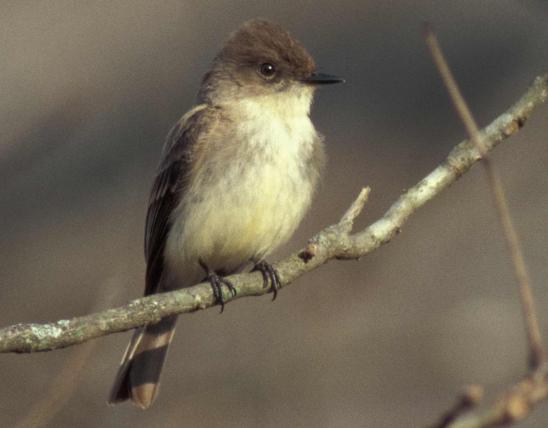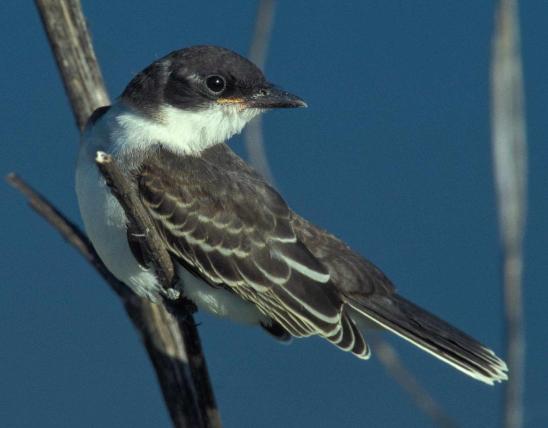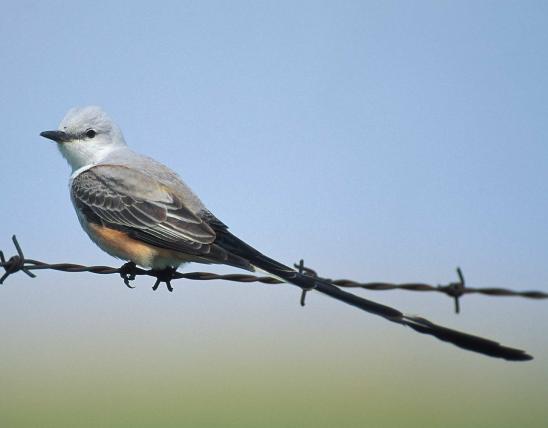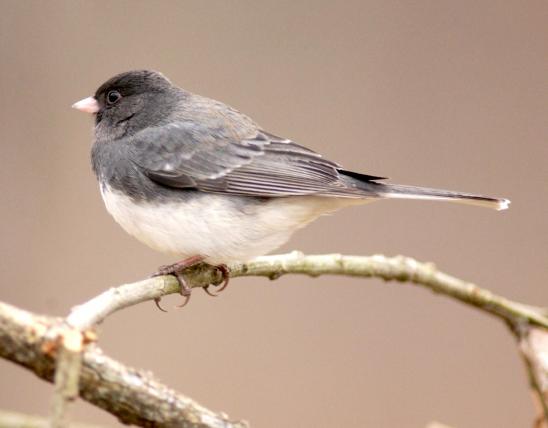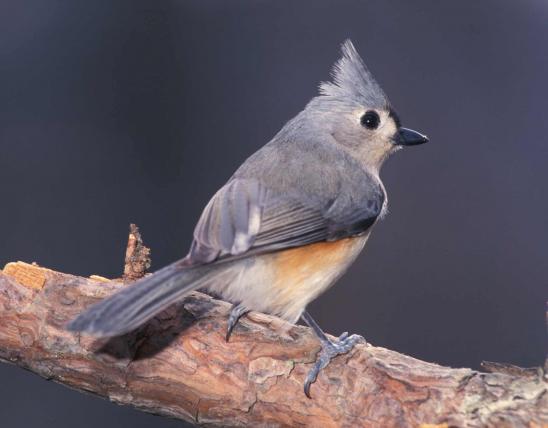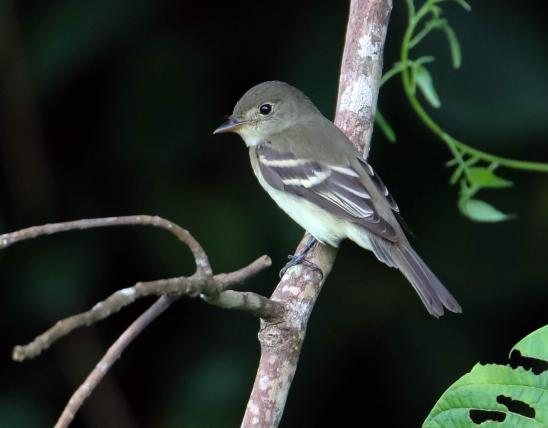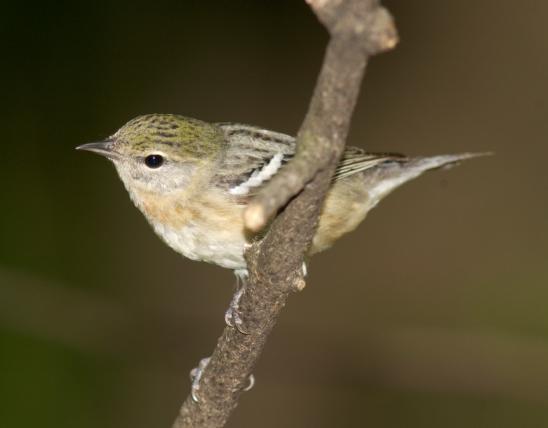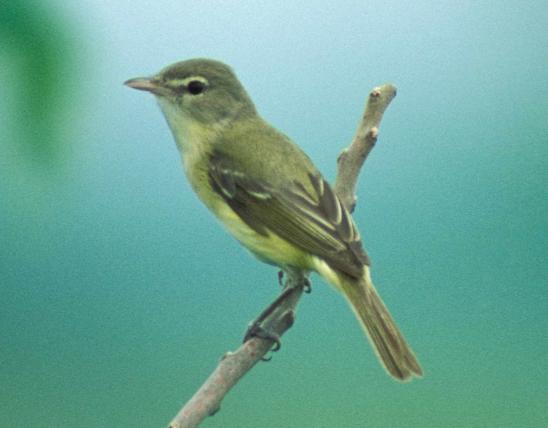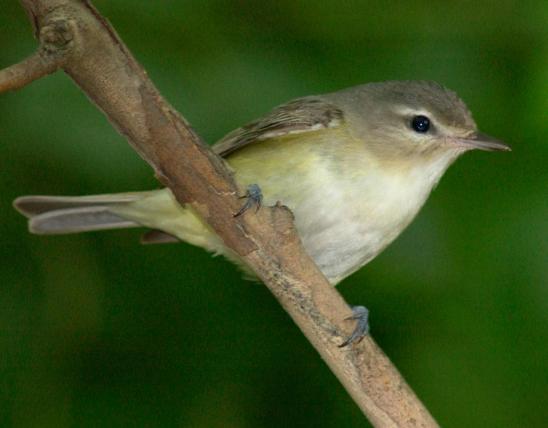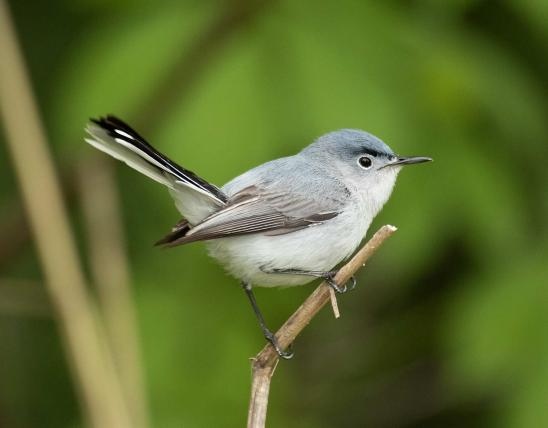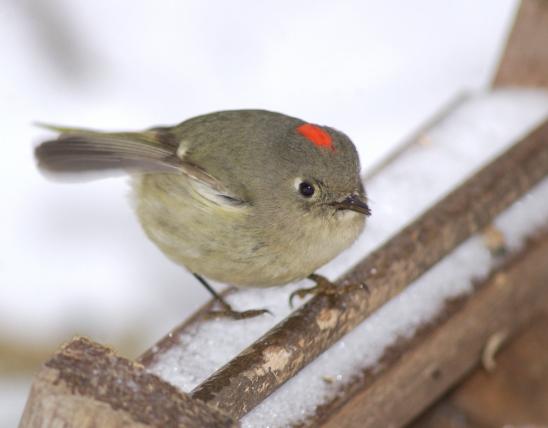
Eastern wood-pewee adult upperparts are grayish olive with two whitish wing bars. Usually has a slightly pointy crest at the back of the crown. Underparts are whitish with a dull white throat. The sides and breast are grayish. The bill is black above and dull orange below. Immature birds may have an all-dark bill, like an eastern phoebe, but will have pale wing bars. The persistent PEE-a-WEE, PEE-OO, or a down-slurred PEE-yer, are often sung throughout the day.
Similar species: The eastern phoebe is a little larger and stockier, has a more rounded head that is clearly darker than the other upperparts and contrasts with the pale throat, usually lacks wing bars, bobs its tail more, and has a different, insistent, raspy call. Several groups of flycatchers are found in Missouri, including 2 pewees, 2 phoebes, 3 kingbirds, 5 in the genus Empidonax, the great crested flycatcher, and very rarely, the vermilion flycatcher. Voice and behavior usually are very helpful if not necessary in distinguishing them.
Length: 6¼ inches (tip of bill to tip of tail).

Statewide.
Habitat and Conservation
Common summer resident in forest openings, open woodlands, pastures with scattered trees, and forest edges. Forages by sallying from a branch to catch flying insects. This wood-pewee often perches higher in trees compared to other flycatchers. The distinctive call, and its habit of returning right back where it was perched earlier, will help you locate and identify it.
Food
Like other flycatchers, eastern wood-pewees perch on a branch offering a clear view of the area around them. When an insect flies by, the bird flits out, snatches it from the air, then returns to its perch. It also picks insects from bark and other surfaces, fluttering and hovering as it does. They eat weevils and bark beetles (pests of gardens and trees), plus horse-, house-, and robber flies, bees, wasps, ants, moths, caterpillars, and more. They also eat a small amount of berries and seeds.
Status
Common summer resident. Continent-wide, populations have been declining, about 45 percent since the middle 1960s. This gradual decline may be caused by some combination of an increase in deer populations in some parts of its breeding range (with the deer’s browsing altering the habitat and available insect food of the pewees), and a loss of habitat in its South American wintertime territory.
Life Cycle
Eastern wood-pewees arrive in Missouri in late April and early May. Their small cup nests, woven from grass and other fine materials and well-camouflaged with lichens, are positioned on tree branches. Clutches comprise 2–4 eggs, which are incubated 12–14 days. Helpless upon hatching, the young fledge just 16–18 days later. There is one brood a year. With nesting completed, they leave our state in September to spend winter in South America.
Human Connections
Pewees and other flycatchers arrive in our state in spring, just in time to help control populations of the many insects that are out and about in our warm seasons. They do the work of a pest-control service, but for free, and without toxic chemicals. Their sighing songs add grace to their work.
Ecosystem Connections
Forest trees benefit by the limits pewees place on populations of bark beetles and other tree pests. Pewees fly to North America in order to take advantage of our many protein-rich insects for feeding their hungry nestlings. They fly south again when winter puts an end to the insect season.








About 350 species of birds are likely to be seen in Missouri, though nearly 400 have been recorded within our borders. Most people know a bird when they see one — it has feathers, wings, and a bill. Birds are warm-blooded, and most species can fly. Many migrate hundreds or thousands of miles. Birds lay hard-shelled eggs (often in a nest), and the parents care for the young. Many communicate with songs and calls.






















